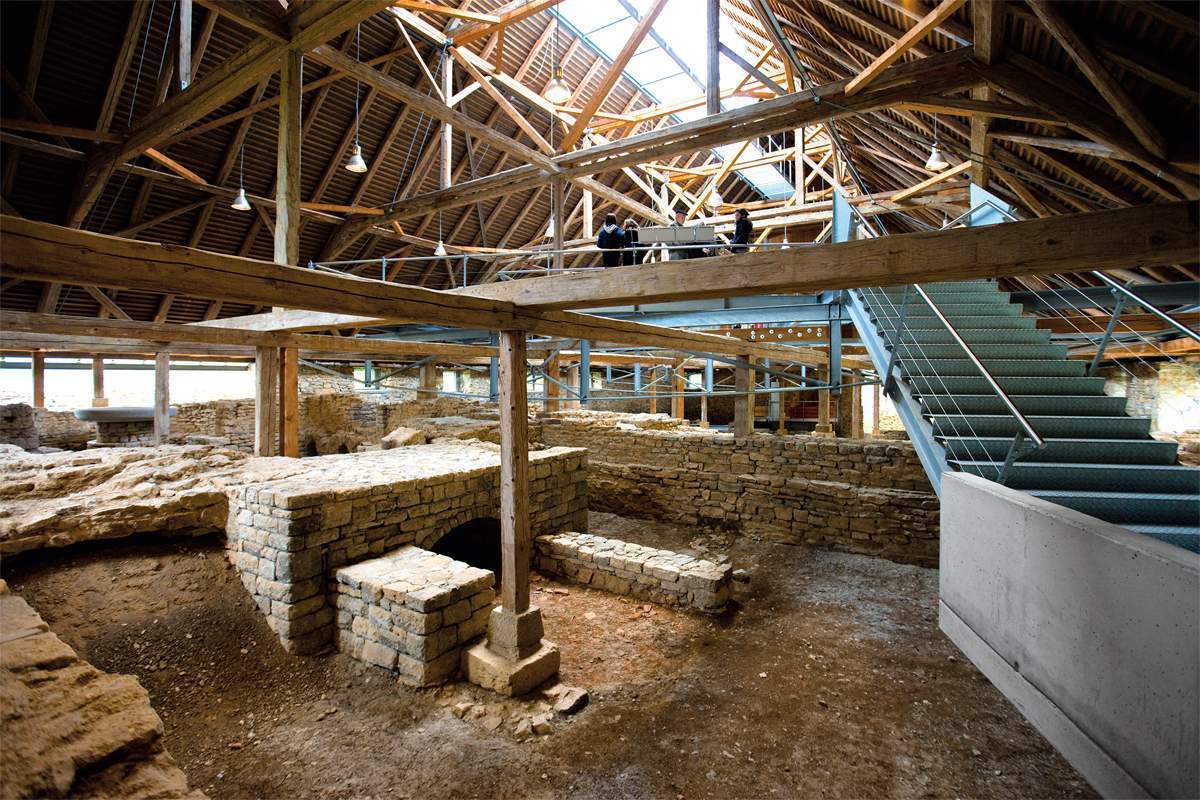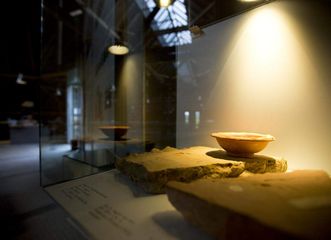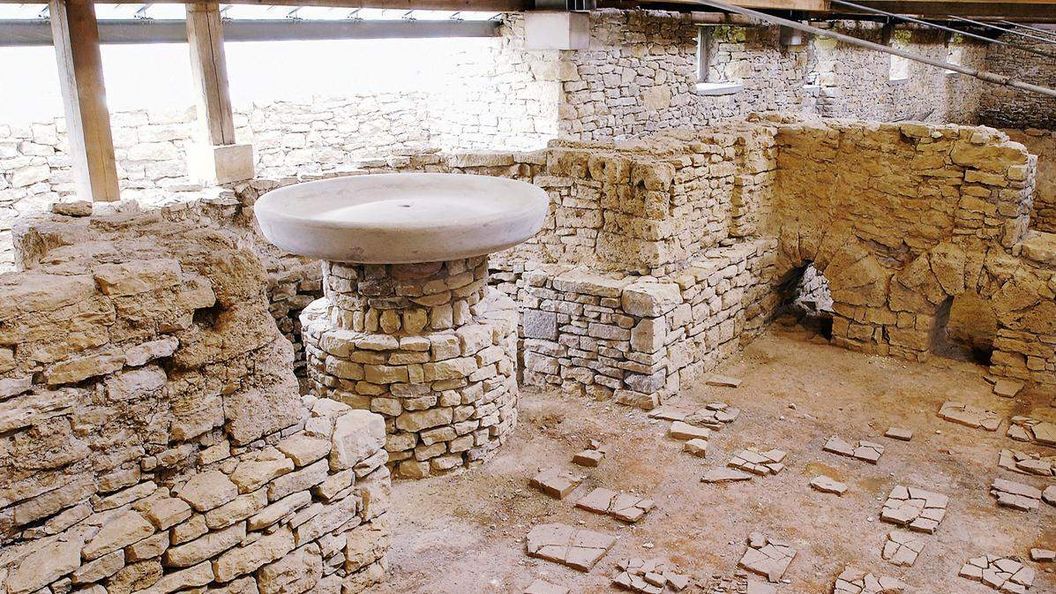Around 70 AD, Roman legions crossed the Alps to construct and secure the Danube Limes, or Roman frontier. At the western end, in today’s Hüfingen, the Brigobannis fortress was built. This boasted a sophisticated road network, an adjoining settlement for civilians and a balineum – a bathhouse for the soldiers.
Facilities for civilians and the military
The Roman baths in Hüfingen are slightly west of the fortress, situated in a valley beneath Galgenberg hill. Not long after their construction, members of the public from the nearby settlement began paying a small fee to come and enjoy the hot waters and steam baths alongside Roman soldiers. A hypocaust, an ingenious Roman underground heating system, ensured the water was warm and kept the floors and walls at an agreeable temperature.
The baths in Hüfingen are an example of a balineum with a blocklike structure, where all rooms were built as compactly as possible. The entire complex – excluding annexes – has an area of around 570 m². Around half of this space was taken up by a generously sized room for undressing and relaxation: the apodyterium, which had a cool-water pool at its centre.
Barn-shaped shelter
Around 30 years after the baths were constructed, the 11th legion was forced to move on as the Danube frontier was shifted. But the settlement at the foot of the fortress remained intact – as did the 600 m² bathing complex. In 1820, Prince Karl Egon II ordered the excavation of the site and the construction of a protective outer building. Its shape is similar to the barns characteristic of this Black Forest region (Schwarzwald-Baar). Today, visitors to the ruins can gain fascinating insight into the history of the Romans and their bathing customs.





